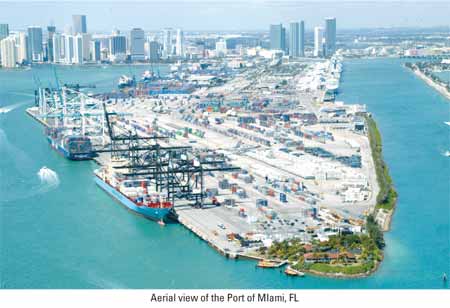
Florida’s East Coast ports prepare for future growth
By Paul Scott Abbott, AJOTWith expansion of the Panama Canal on target for completion in 2014, it is not surprising that projects planned or under way at a number of Florida Atlantic Coast ports are being eyed for readiness in the next four to five years.
Looking individually at Florida’s East Coast ports, beginning in Miami and moving northward toward the Georgia line:
Miami River
Private terminal operators along the Miami River have been busy moving relief goods to Haiti since the devastating earthquake rocked that Caribbean island Jan. 12. Facilities along the river, which last year saw completion of dredging to its original controlled depth of between 15 feet and 17 feet, serve shallow-water markets throughout the Caribbean.
The past year has seen three new terminal operators establishing services, joining the river’s longtime leading carrier, Antillean Marine Shipping Corp., and others. The new operations include Santé Shipping Lines Inc., led by Charles Towsley, former director of the Port of Miami and the Tampa Port Authority, and port architect Bruno Ramos, offering Haiti service; Guerda Terminal, serving Haiti; and Sea Ocean International, with service to Jamaica.
Port of Miami
Officials at the Port of Miami-Dade County are optimistic that the $1 billion project to provide a tunnel to link the 518-acre island port to the mainland limited-access highway network is moving forward. The project reached financial close in late 2009. The environmental process is complete, and the general tunnel location and alignment have been identified. Upon execution of a concession agreement, a 55-month construction schedule is slated to begin in early 2010, meaning the tunnel could be in operation by 2014.







